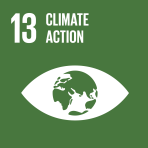Abstract
Achieving the transition to an environmentally sustainable and climate-safe future is a matter of justice in itself—people in vulnerable situations, poor countries and future generations stand to suffer the most from climate change and environmental degradation—but how it is done also matters. A green transition is already taking place, creating jobs and economic opportunities, and its potential in the medium—and long-term is much greater. Inevitably, however, a transformation on the scale necessary to contain climate change also implies losses of jobs, livelihoods, and public and private revenues in many areas and not necessarily where the benefits will accrue most directly. It also entails changes in the way energy and food needs are met and land is used, generating other types of social and environmental challenges. Breaking the inertial high-carbon development paths requires strong political support worldwide and at all levels. Greening strategies that do not take into account the political economy of the transition and the economic and social well-being of affected communities are therefore likely to be politically fragile and vulnerable to stalemates and reversals. In this context, calls for a just transition have been increasingly prominent in global, national and subnational policy circles.
- 04 Nov 2022



